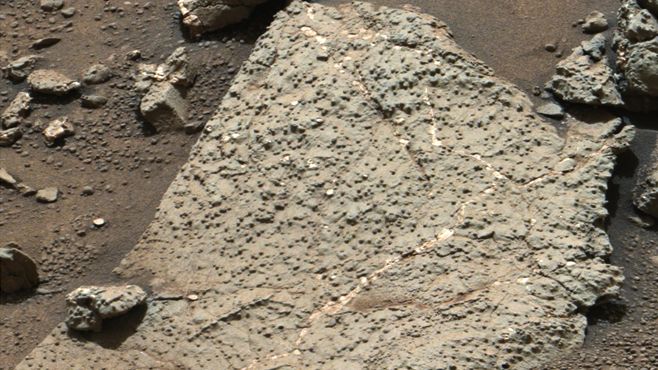Curiosity findings raises the question, was there once life on Mars?
Key chemical ingredients for life discovered

NASA hasn't been bashful about updating the world with the findings of the Curiosity rover currently exploring Mars.
Since Curiosity landed back in August 2012, we've gotten plenty of updates on the progress of the mission, whether they were worthwhile or not.
There has been little success in finding actual Martian organic material during Curiosity's expedition, but some of the findings seemed to show the potential for organic life on Mars did at one time exist.
On Tuesday, NASA revealed a startling new discovery, which further proved that at one time, Mars was perfectly suitable for living organisms.
The answer is yes
This latest breakthrough was found in a new rock sample collected by Curiosity, which contained several of the key elements necessary for life.
Scientists were able to find sulfur, nitrogen, hydrogen, oxygen, phosphorus and carbon in powder cultivated from sedimentary rock near an ancient stream bed in the Gale Crater.
"A fundamental question for this mission is whether Mars could have supported a habitable environment," said Michael Meyer, lead scientist for NASA's Mars Exploration Program at the agency's headquarters in Washington.
Get daily insight, inspiration and deals in your inbox
Sign up for breaking news, reviews, opinion, top tech deals, and more.
"From what we know now, the answer is yes."
The analyzed data showed the area Curiosity was currently exploring could have at one time been the end of an ancient river or a wet lake bed, both of which would have provided the proper growing environment for microbes.
"We have characterized a very ancient, but strangely new 'gray Mars' where conditions once were favorable for life," said John Grotzinger, Mars Science Laboratory project scientist at the California Institute of Technology in Pasadena, Calif.
Scientists plan to continue exploring the local area (known as Yellowknife Bay) with Curiosity for another few weeks before heading off to the Gale Crater's central mound, Mount Sharp.
It's there NASA believes it will find a more definitive answer as to the duration and diversity of the habitable conditions Mars once experienced.